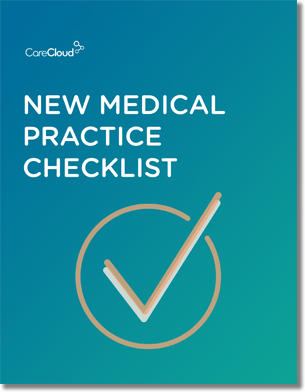Martin Luther King, Jr. once said “change does not roll in on the wheels of inevitability, but comes through continuous struggle.”
Granted, his cause was perhaps a bit different than an IT switch, but more generally applying his words to your struggle will force you to realize you’re in for a rocky road to the promised land. So in response to your smoke signals, we’ve amassed all sorts of useful tips to make your journey a little more pleasant.
Tips to Simplify the Switch
Switching from one practice management software to another shouldn’t be difficult, although many vendors will (naturally) make it sound that way.
Data conversion is one important aspect. There are a couple of ways to do data conversion: taking a phased or big bang approach. The key is deciding which option makes the most sense for your practice to plan accordingly and make the process easier to manage in the long run.
Data conversion, training, and implementation can be completed in stages, allowing practices to continue operating on their old system while switching to a new system to avoid work and cash flow disruptions. Or, everything can be done in one shot to transfer as quickly as possible if your practice is in a rush to switch.
Making the Switch: Implementation
The question your practice has to ask is: Do we take the big bang approach and get it done quickly or do we take the slow phase process and do it over time?
Big Bang – An implementation strategy that cuts over all parts of a planning system at the same time in a company or division, as opposed to a phased implementation module by module.
Phased Implementation – A gradual rollout of functions sequentially to a grouping of departments and/or practices.
Should all physicians go on the system at once? Ideally, all physicians in one office should move to a new system together. Otherwise, the office staff will need to run at least two different sets of processes for things like patient encounters.
“Not only is that confusing, but it is also inefficient,” says Maria Pacheco, MSHSA, CareCloud Implementation Specialist and Certified HITECH Implementation Manager. “However, if the practice has more than one office, there is no overriding reason that all practices have to go on the EHR at one time. In fact, depending on the practice’s resources, it might be wiser to roll out one office at a time.”
Mrs. Pacheco has seen a few practices choose the “big bang” strategy and successfully implement all functions of an EHR and PM system at once. The consensus, however, is that success is more likely if functions are implemented sequentially in a phased implementation.
“When applying the phased implementation approach, typically you start by introducing less interactive functions first, like scanning and result reviewing, and then move on to more interactive functions, like interoffice messaging, prescription writing, and note documentation,” explains Mrs. Pacheco.
This is especially true in larger organizations where she’s seen “big bang” implementations, despite careful planning, lead to situations in which clerical staff, nurses, and physicians had to almost completely stop working, resulting in substantial productivity slowdowns and lost revenue.
Whichever strategy you choose to switch your practice management and EHR system, it’s essential to have a software partner that will guide you through the process with the proper level of service and support.
Conclusion: Time for Change
The changing healthcare environment is making it increasingly difficult for physicians in private practices to turn a profit. However, those that look to better tools to stay ahead of the curve are able to adapt and thrive in an otherwise challenging atmosphere.
“We’re collecting faster, more accurately,” says Dr. Lawrence Berger, a Miami- based cardiologist that switched to a fully integrated, cloud-based PM, billing, and EHR system this year. “In my case, it’s going to mean the difference of [practice] survival or not.”
While doctors are quick to utilize the latest technological breakthroughs to provide better clinical care to their patients, they are often slow to adopt the latest tools to improve the way they manage the financial side of their business, which can affect their finances and quality of life.
“It’s been cutting my time down by a few hours every day,” says Dr. Berger. “That gives me an opportunity to do other things in the hospital, take on additional work, or even just get home earlier to see the family.”
Using this guide can help you decide if it’s time to switch your practice management system, create a realistic plan to do so, and make the transition as easy as possible. As healthcare change continues to accelerate, there is no better time than now to get started.

Do you know what you need when setting up a new medical practice?



